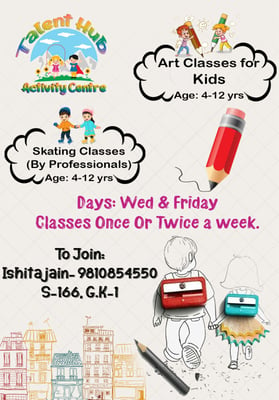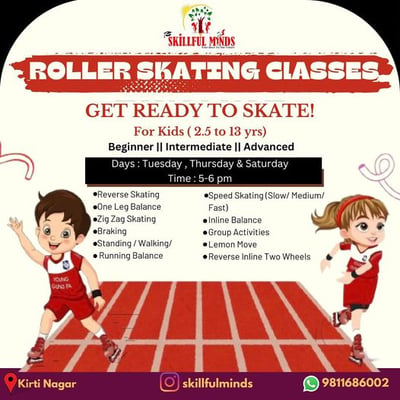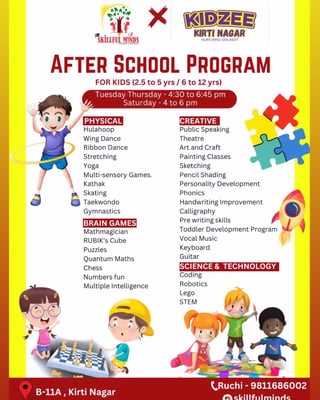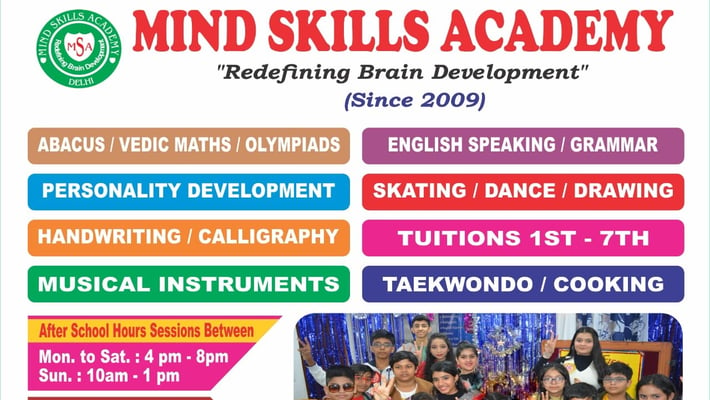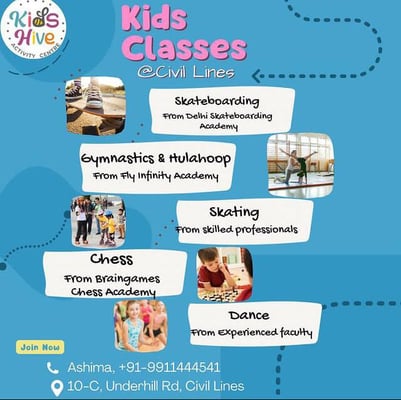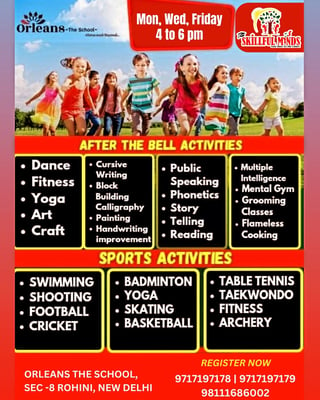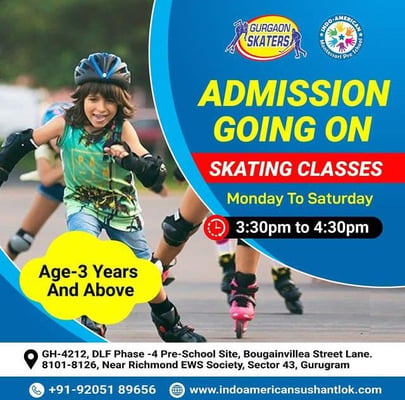Skating classes for Kids - 27 options found
Skating classes for children aged 2 to 15 offer multifaceted... Skating classes for children aged 2 to 15 offer multifaceted benefits. Physically, they enhance cardiovascular health, muscle development, and motor skills. Mentally, they promote spatial awareness, cognitive skills, and self-confidence. Socially, they foster teamwork, friendships, and emotional well-being. Children as young as two can start learning, and prior experience isn't necessary. Skating classes vary from ice to roller and accommodate all skill levels. While skating can lead to career opportunities, its primary focus is on holistic development, making it an enjoyable and enriching activity for children of all ages. Read more
talent hub-art & skating classes for kids
skillful minds-roller skating classes
daffodils school-admission open
skillful minds-after-school program for kids
bepic after school-skating class
daffodils school-summer camp 2024
mind skills academy-multiple classes
venus public school-kids activities classes
holy trinity summer camp 2024
holy trinity skating 2024
kids hive-kids classes
skillful minds-summer smiles exclusive activities
humpty dumpty play school-summer camp
skillful minds-summer smiles exclusive activities
the-navyandhra-school-day care
blooming flowers - summer camp 2024
Advantages of Skating Classes for Children Ages 2 to 15
Skating classes offer numerous benefits for children's physical, mental, and social development. In this comprehensive guide, we'll explore the advantages of skating classes for children aged 2 to 15, potential limitations, and address common questions regarding its impact on brain development, personality development, and future opportunities.
Introduction
Skating, whether on ice or wheels, provides a fun and engaging way for children to stay active while developing essential skills. Skating classes typically include instruction in balance, coordination, agility, and endurance, all of which contribute to children's overall well-being.
Advantages
-
Physical Fitness:
- Cardiovascular Health: Skating is an excellent aerobic exercise that strengthens the heart and improves cardiovascular health.
- Muscle Development: Skating engages various muscle groups, including the legs, core, and arms, promoting muscle strength and endurance.
- Balance and Coordination: Children develop balance and coordination skills as they learn to maintain stability while gliding on skates.
-
Motor Skills Development:
- Fine Motor Skills: Skating requires precise movements of the feet and hands, helping children refine their fine motor skills.
- Gross Motor Skills: Maneuvering on skates enhances gross motor skills such as running, jumping, and pivoting, contributing to overall motor development.
-
Brain Development:
- Spatial Awareness: Skating encourages spatial awareness and proprioception as children navigate their bodies in a three-dimensional space.
- Cognitive Skills: Learning new skating techniques and routines stimulates cognitive development and problem-solving abilities.
-
Self-Confidence and Resilience:
- Achievement: Mastering skating skills and overcoming challenges boosts children's self-confidence and sense of accomplishment.
- Resilience: Falling and getting back up while learning to skate teaches children resilience and perseverance in the face of adversity.
-
Social Interaction:
- Teamwork: Skating classes often involve group activities and cooperative games, fostering teamwork and communication among children.
- Friendships: Children have the opportunity to make new friends and develop social connections with peers who share similar interests in skating.
-
Emotional Well-being:
- Stress Relief: Skating provides an outlet for stress relief and emotional expression, promoting overall mental well-being.
- Positive Mood: The sense of freedom and exhilaration experienced while skating can uplift children's mood and reduce feelings of anxiety or depression.
Limitations
-
Safety Risks:
- Injuries: Skating carries inherent risks of falls and collisions, which can result in injuries such as bruises, sprains, or fractures.
- Protective Gear: Ensuring children wear appropriate protective gear, including helmets, knee pads, and wrist guards, is essential to minimize the risk of injury.
-
Financial Costs:
- Equipment and Fees: The cost of purchasing skates, protective gear, and enrollment fees for skating classes may pose financial challenges for some families.
Common Questions
-
At What Age Can Children Start Skating?
- Children can start learning to skate as early as two or three years old, although the age at which they can participate in formal skating classes may vary depending on the program's requirements.
-
Do Children Need Prior Experience to Join Skating Classes?
- No prior skating experience is required to join beginner-level skating classes. Skating instructors are trained to accommodate children of all skill levels and provide instruction tailored to individual needs.
-
What Are the Different Types of Skating Classes Available for Children?
- Skating classes for children may include ice skating, roller skating, inline skating, or skateboarding, with specialized programs available for each discipline.
-
Can Skating Lead to Career Opportunities in Sports or Entertainment?
- While not as common as traditional team sports, skating can lead to career opportunities in professional figure skating, speed skating, roller derby, or stunt skating for film and television productions.
Conclusion
Skating classes for children aged 2 to 15 offer a wide range of physical, cognitive, and social benefits. From improving physical fitness and motor skills to fostering self-confidence and resilience, skating contributes to children's overall development and well-being. While safety risks and financial costs exist, the advantages of skating classes outweigh the limitations, providing children with opportunities for growth, learning, and enjoyment on the ice or wheels.

